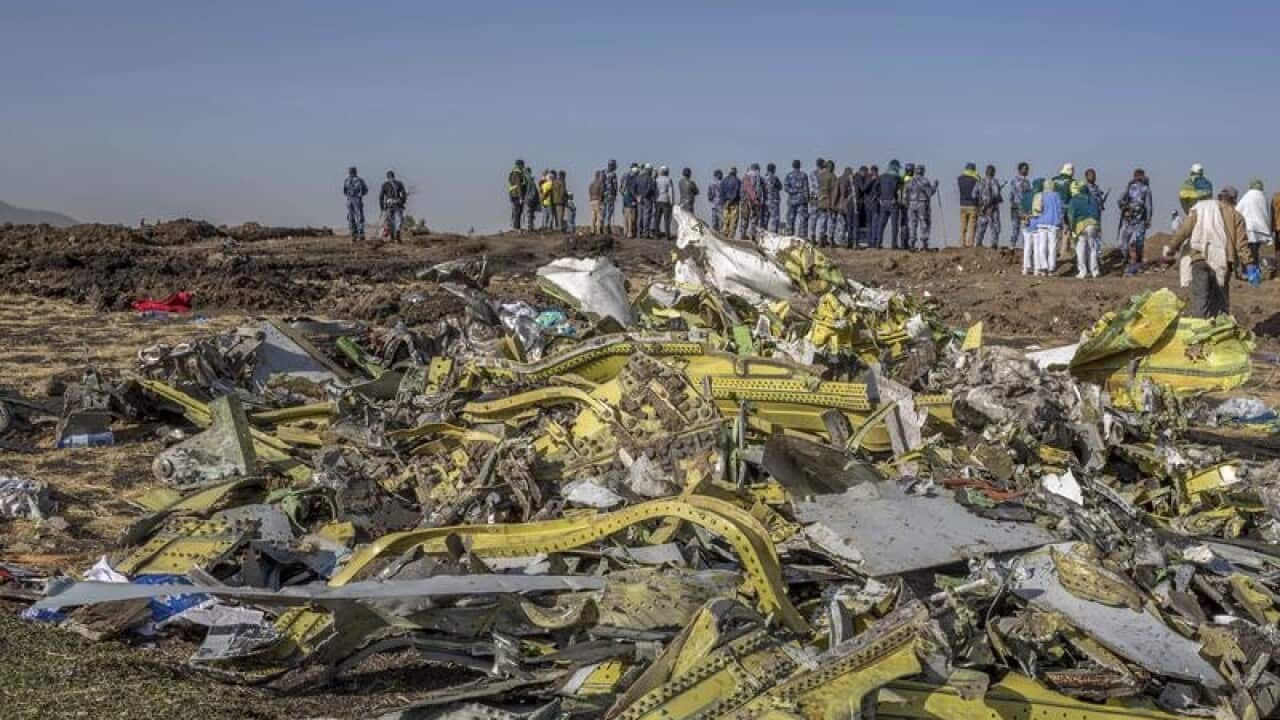Ethiopian authorities will deliver their first report on the crash of Ethiopian Airlines flight 302 on Thursday.
About 35 nationalities were among the 157 passengers and crew who died when the new Boeing 737 MAX 8 plane crashed just six minutes after take-off from the capital Addis Ababa in clear conditions.
The March 10 disaster was the second crash of a MAX 8 in five months and has prompted the worldwide grounding of Boeing's best-selling plane.

Investigators have found similarities between Boeing 737 Max 8 crashes in Ethiopia and Indonesia. Source: AAP
The pilots of the doomed Ethiopian flight initially followed Boeing's emergency steps for dealing with a sudden downturn of the nose of their plane but could not regain control, according to a published report.
The Wall Street Journal reported on Wednesday that pilots of the Ethiopian Airlines Boeing 737 Max turned off a flight-control system but still could not get the plane to climb.
They turned the system back on and tried other actions before the plane crashed, the paper said, citing anonymous sources.
In a statement, Boeing urged against speculating before the preliminary report and flight data from the plane are released.
The Journal says the pilots' actions are still being evaluated by investigators but could raise questions about past assertions from Boeing and US regulators on how to disengage the anti-stall system.
Investigators are examining the crashes that killed all 346 aboard the 737 Max 8 jets operated by Indonesia's Lion Air in October and Ethiopian Airlines, including the role of a flight-control system called MCAS, which under some circumstances could automatically turn the plane's nose down to prevent an aerodynamic stall.

